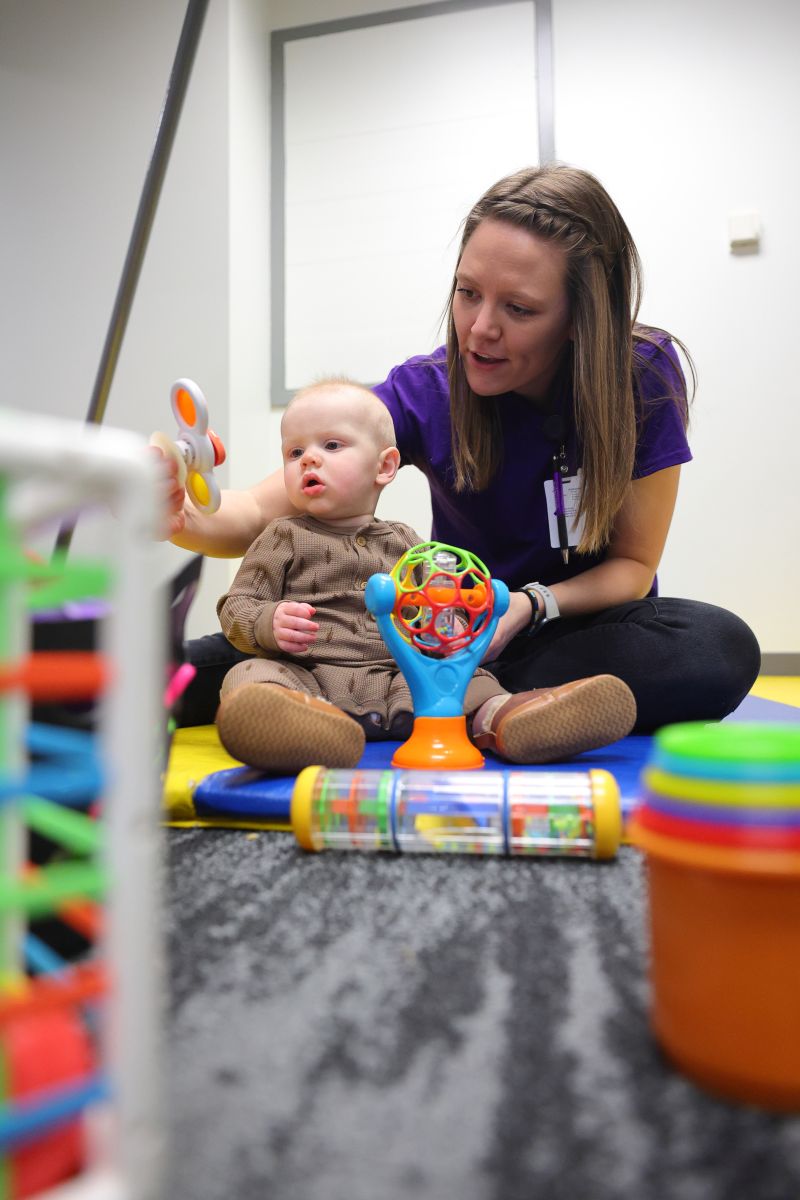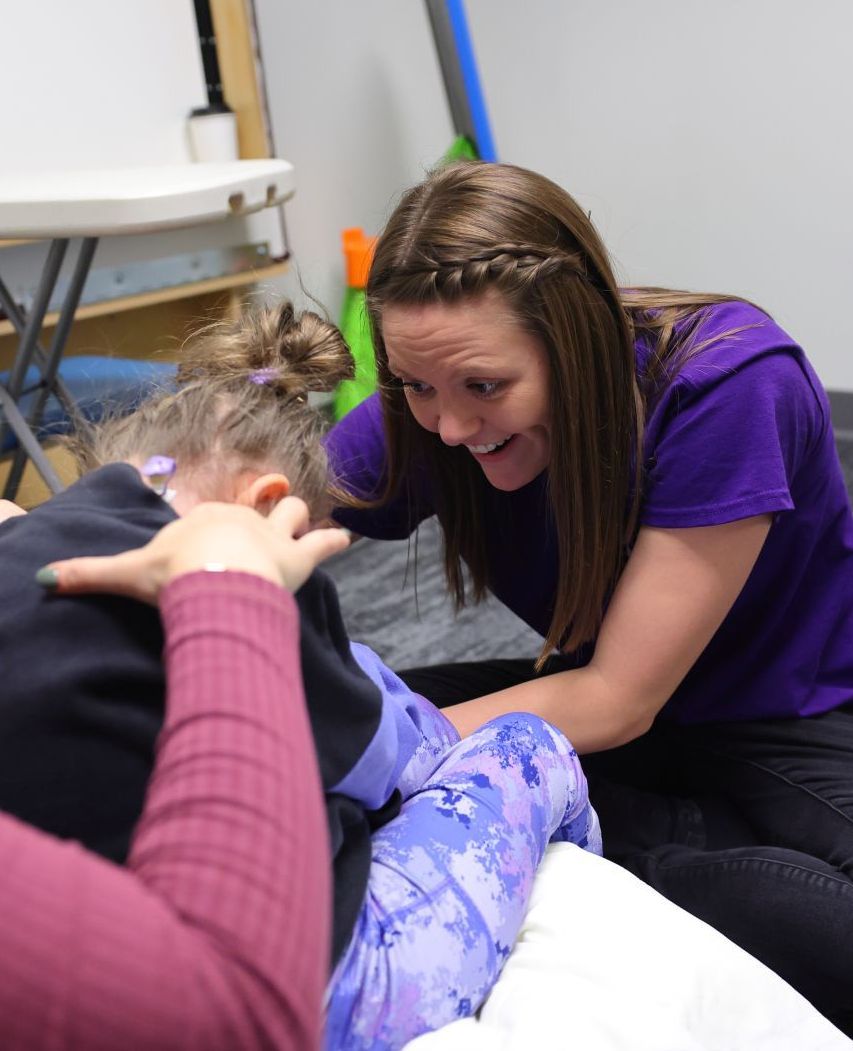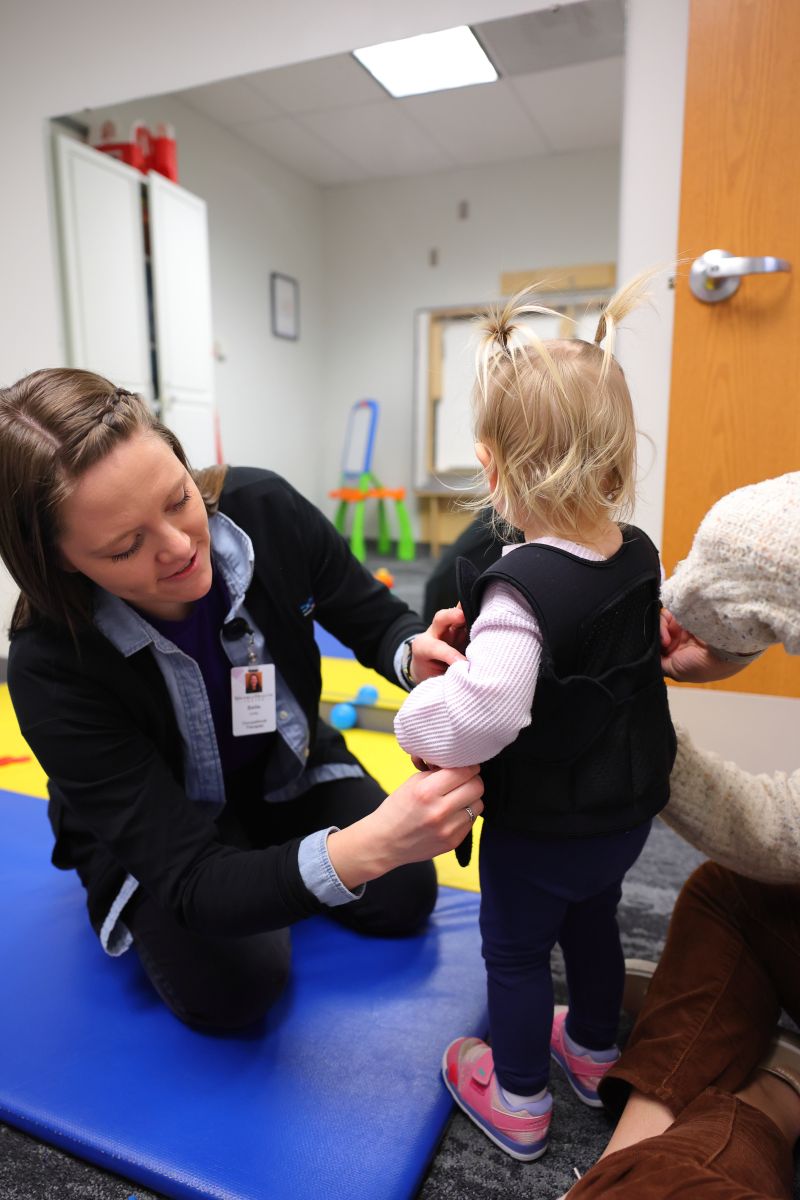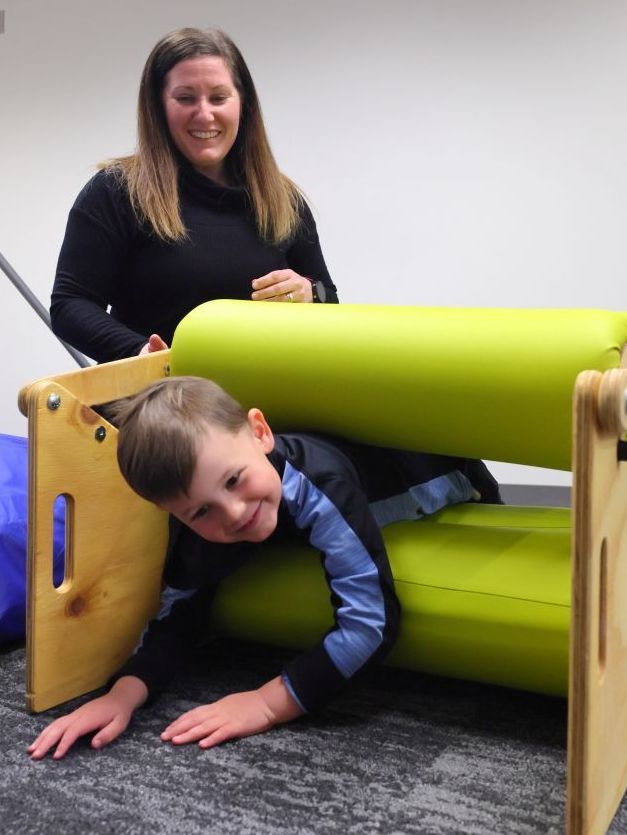Pediatric Occupational Therapy

Pediatric Occupational Therapy
Our occupational therapists offer a full range of occupational therapy services for the pediatric population. Whether your child needs assistance progressing through developmental milestones or needs assistance with self-care or other activities of daily living our pediatric occupational therapists can establish a treatment plan to address your child’s needs.

Pediatric Occupational Therapy - Center for Pediatric Therapies & Parkersburg Clinic
Occupational therapy focuses on assisting children to develop the skills they need to be as independent and functional in all of their daily occupations as possible. Children’s occupations include activities such as play, school, and self-care tasks. Our pediatric occupational therapists are patient and family-focused to determine the child’s strengths, areas for improvement, and overall child/family goals. Pediatric occupational therapists work with children of various diagnoses/disabilities or after an injury or accident to maximize their function and quality of life.
What can occupational therapy help with?
- Fine motor delays
- Upper extremity motion, strength and function
- Hand-eye coordination skills
- Visual-motor perception skills
- Improving sensory processing skills
- Age-appropriate self-care skills, such as:
- Dress/undressing
- Manipulating fasteners (snaps, zippers, buttons)
- Tying shoes
- Self-feeding (being able to use utensils...)
- Hand washing

Our Occupational Therapists can provide treatment for:
- Autism Spectrum Disorder
- ADD/ADHD
- Genetic Conditions
- Neurological conditions, such as Cerebral Palsy
- Developmental Delay
- Children with fine motor coordination delays
- Learning delays
- Sensory processing disorders
- Traumatic injuries (such as Traumatic Brain Injuries or Spinal Cord Injuries)
- Juvenile Rheumatoid Arthritis
- General orthopedic injuries and surgeries
- Sprains and strains
- Post-fracture care

Indicators for Pediatric Occupational Therapy
- Doesn't reach for/interact with toys by 6 months of age
- Doesn't bring hands together at the midline by 6 months of age
- Unable to complete finger feeding by age 1
- Unable to use utensils to feed self by age 2
- Dressing/undressing by age 3
- Unable to draw/copy simple shapes by age 4
- Difficulty cutting paper by age 4
- Unable to complete buttons or zippers by age 5
- Unable to write letters by age 5 or poor handwriting in older children
- Upper extremity weakness or discoordination
- Demonstrates difficulty processing sensory information which interferes with one or more areas of daily life
- Demonstrates defensiveness or dislike of clothing or other textures
- Becomes anxious or distressed with brushing teeth, brushing hair, trimming finger and/or toenails, haircuts, taking baths, etc.
- Sensitivity to bright lights
- Sensitivity to loud sounds
- Difficulty sitting still and/or focusing
.JPG)
Sensory Integration
What is sensory processing?
Our world is full of various stimuli ranging from the things we hear, see, taste, smell, and touch. The way in which the body processes this information, and the way it affects the body, is different for each person. In children with sensory processing difficulties, what may be "normal" stimulus for one child may be overwhelming to another. For example, if a child has a sensitivity to texture, the feeling of a tag in their shirt may be unbearable, while others may not even notice the feeling of a tag. In the case of a child with sensory processing challenges, the child may not be able to fully identify that this stimulus is the problem, so they may start acting or displaying more behaviors. In children whose sensory systems become dysregulated, they have trouble participating in everyday activities. Occupational therapy can help with sensory processing difficulties by determining what sensory stimuli children are over sensitive or under sensitive to, and developing ways in which children can cope with these inputs. Our occupational therapists work with both the child and the parent/caregiver to determine the most successful strategies to incorporate at home to help your child's sensory system become regulated to promote the most successful engagement with peers, family, at school, play, and all other areas of child development.

